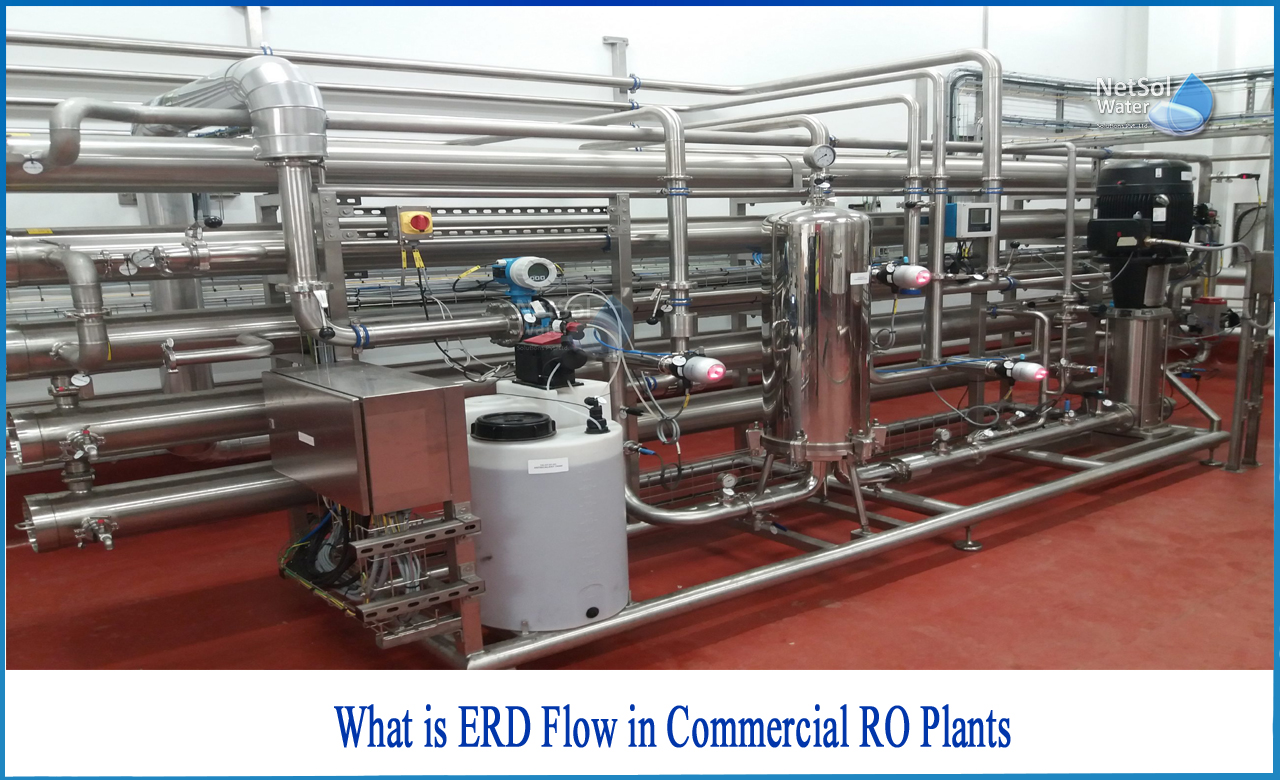What is ERD Flow in Commercial RO Plants?
Reverse Osmosis (RO) produces around 65 percent of total desalinated water. Because of its inherent advantages such as low cost and energy consumption, RO is preferred.
Electrical energy accounts for nearly half of the entire cost of the RO desalination process, with the majority of it being used to obtain high-pressure feed water. Because more than half of the feed water is discharged as high-pressure brine following the RO process, new energy recovery devices (ERDs) are constantly being developed to recapture the high-pressure energy held in the brine. The adoption of ERD is one of the primary reasons for the current level of energy consumption, which feeds the dominance of seawater reverse osmosis (SWRO) in the desalination market.
ERD in RO Plants
Energy Recovery Devices (ERDs) are at the heart of any Sea Water Reverse Osmosis (SWRO) desalination facility's energy-saving efforts.
The high-pressure pumping required to overcome the osmotic pressure in saline feedwater produces a highly compressed saline concentrate stream. ERDs are frequently used to recover this hydraulic energy and transmit it to the feed stream, lowering the amount of energy required by HPPs as well as the size of HPP required. These devices transform the concentrate's hydraulic energy into mechanical energy, which is used to drive a piston or pump, which then returns the hydraulic energy to the feed.Most new SWRO facilities have used isobaric chamber ERDs instead of centrifugal devices since roughly 2000.
Isobaric chamb?ers are divided into two types: rotary-driven and piston-driven.
Rotary-driven:Rotary-driven ERDs have a central rotor that spins on a hydrodynamic bearing and introduces low and high pressure feed and concentrate. After filling the rotor with low pressure feed and sealing it, high pressure concentrate is added, pressurizing the low pressure feed and forcing it out towards the RO membrane skid. The resulting low pressure concentrate is displaced by entering low pressure feed water when the rotor is re-sealed, and the process is repeated. Due to its compact size, durability, modular design, and efficiency, PX (Pressure Exchange) is the most extensively utilized rotary ERD in modern SWRO facilities.
Piston-driven:The transfer of energy between concentrate and feed occurs inside hydraulic cylinders, with the alternating pressurization/depressurization process controlled by switcher valves. The energy transfer between concentrate and feed occurs inside hydraulic cylinders, with the alternating pressurization/depressurization process regulated by switcher valves.
Piston-driven ERDs follow a similar mechanism of hydraulic energy exchange. Due to the necessity for control actuators and valving, piston-driven ERDs are less compact and modular than PX devices, and thus require more capital and maintenance.
What can we offer?
Netsol Water is one of India's major water treatment company, with a purpose to make water management systems more cheap, sustainable, and energy-efficient in order to meet the problems of population increase, industrial expansion, and climate change.
For any advice or assistance on selecting the best water and wastewater treatment unit,
Call us on +91-965-060-8473;



